 In a time where American craft beer is more obsessed with hazy IPAs, pastry stouts and sour ales, it’s refreshing to revisit Trappist ales, which Peaks and Pints will aiming our daily to-go beer flight toward, a flight we call Peaks and Pints Pilot Program: Trappist On The Fly.
In a time where American craft beer is more obsessed with hazy IPAs, pastry stouts and sour ales, it’s refreshing to revisit Trappist ales, which Peaks and Pints will aiming our daily to-go beer flight toward, a flight we call Peaks and Pints Pilot Program: Trappist On The Fly.
Of the many thousands of beers produced around the world, only 14 monasteries — six in Belgium, two in the Netherlands, and one each in Austria, Italy, England, France, Spain, and the United States — currently produce Trappist beer as recognized by the International Trappist Association. These beers are all brewed with three criteria in order to earn the name and mark “Trappist”: The beer must be brewed within the walls of a Trappist monastery, either by the monks themselves or under their supervision; The brewery must be of secondary importance within the monastery, and it should witness to the business practices proper to a monastic way of life; The brewery is not intended to be a profit-making venture.
Peaks and Pints Pilot Program: Trappist On The Fly
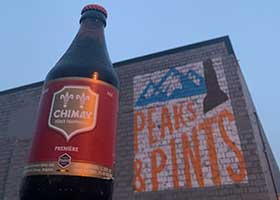 Chimay Premiere (Red)
Chimay Premiere (Red)
7% ABV, 19 IBU
Chimay is made by Trappist monks cloistered away in Scourmont Abbey in Belgium (where they also make tasty Chimay cheese) with the operation’s profits paying for the monks’ pious lifestyle and charitable efforts. Having been around since 1862, Chimay’s a relatively new entry in the world of godly beverages with three commercial beers, including its first beer, Premiere (Red). Its recipe was developed in collaboration between the master brewer, Father Théodore, and Jean De Clerck in the two decades following WWII. Chimay surprisingly prefers American hops, and have used Galena in the past. They now use Cluster hops. Interestingly, they don’t use whole hops but extract because Chimay is designed to lay down and age, the monks prefer extracts, which hold their aroma and bitterness longer than whole hops. Red has a beautiful burnt-sienna color to it, and shows some cloudiness with a pretty decent head. It has a warming stone-fruit sort of smell that is pleasantly gamey. The taste is expectantly sweet, fruity, and malty — a whole lot of flavor without being overwhelming. It’s an accessible example of the classic Belgian ale.
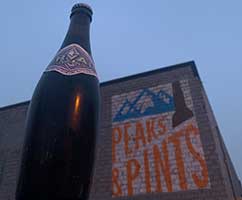 Brasserie d’Orval Orval 2019
Brasserie d’Orval Orval 2019
6.2% ABV, 36 IBU
When Orval head brewer Jean-Marie Rock retired in 2013, it was his long-term assistant brewer Anne-Françoise Pypaert who replaced him. By doing so, Anne-Françoise became the first female head brewer at a Trappist Abbey. When she started at Orval in 1992 she was one of the first female brewers in Belgium and encountered an industry almost exclusively dominated by men. Joining Orval straight out of university, she has never worked a day anywhere else. The Orval’s brewery produces only one beer to sell, a beer with a high fermentation that continues in the bottle. Orval Trappist Ale offers an inviting, complex bouquet; deep flavor with sharp but somehow inviting sourness; and a huge rocky head. Brewed within the walls of a monastery in Belgium, this beer is the favorite of many professional brewers around the world. The 2019 vintage is pillowy soft with abundant carbonation. It’s dry, bitter and malty with some fruit and spice.
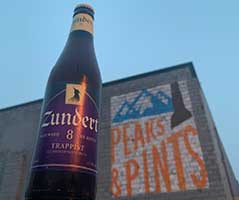 De Kievit Zundert Trappist 8 Ale
De Kievit Zundert Trappist 8 Ale
8% ABV, 34 IBU
Abbey Maria Toevlucht was established in 1900 in the quiet countryside outside the village of Zundert, Netherlands, near the Belgian border. De Kievit Trappist Brewery, built in one of the abbey’s historical farm buildings, began selling beer in 2013. The lapwing weathervane on the roof inspired the name of the brewery, and remains in place still: Brouwerij De Kievit — “The Lapwing Brewery” — also uses the beautiful crested northern lapwing in their logo. The brewery’s Zundert Trappist 8 Ale shows clear chestnut-brown color, a bouquet of herbal spice, and layered, fruity depth wrapped around caramel malt. Dry, complex, bottle-conditioned; Zundert evolves with each taste and defines a new chapter in the book of excellent Trappist ales.
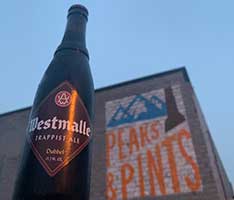 Brouwerij der Trappisten van Westmalle Dubbel
Brouwerij der Trappisten van Westmalle Dubbel
7% ABV, 24 IBU
In 1836 the Belgian Westmalle monastery became a Trappist Abbey and began brewing beer shortly thereafter. The holy suds they produced started out as an insider-only deal — a choice beverage to be made and enjoyed by Trappists and Trappists alone, but eventually they decided to expand and opened up a public beer hall in the early 1930s. Westmalle Dubbel is a dark, reddish-brown Trappist beer with a secondary fermentation in the bottle. The creamy head has the fragrance of special malt and leaves an attractive lace pattern in the glass. The flavor is rich and complex, herby and fruity with a fresh-bitter finish. It is a balanced quality beer with a soft feel in the mouth and a long, dry aftertaste.
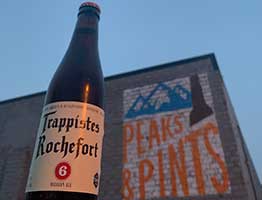 Abbaye Notre-Dame de Saint-Remy Trappistes Rochefort 6
Abbaye Notre-Dame de Saint-Remy Trappistes Rochefort 6
9.2% ABV, 22 IBU
Abbaye Notre-Dame de Saint-Remy, which sits in a large valley close to Rochefort in the province of Namur, in Belgium, is home to a community of Trappist monks (Cistercians of the Strict Observance). The three brown ales produced by the abbey — Rochefort 6, Rochefort 8 and Rochefort 10 — can be tasted in the nearby town of Rochefort and all over the world. Rochefort Trappist 6 is named after its original gravity measured in “Belgian degrees” — a brewing scale no longer used today. It was first sold to the public in 1953. Bottle-conditioned for soft natural carbonation, and the oldest of the three Rochefort Trappist beers, Rochefort 6 has the reddish color of autumn leaves, a soft body and an earthy, herbal palate (a hint of Darjeeling tea), which develops into a deep fruitiness. Refined, soft spiciness in the bouquet finishes with a bit caramel.
 Spencer Monks Reserve Ale
Spencer Monks Reserve Ale
10.2% ABV
In January 2014, the 63 brothers of St. Joseph’s Abbey — about an hour’s drive west of Boston — received the thumbs up from the International Trappist Association, selling the first Trappist beer brewed outside Europe. Spencer Brewery Reserve Ale is a full-bodied classic Trappist quadrupel with a nose of dark malts, caramel, bread, raisins, figs, molasses, plums, cinnamon and herbal and earthy hops. The taste is sweet with strong notes of dried fruits and spices, while the background has a strong malty profile with notes of roasted malts, caramel and dark bread.
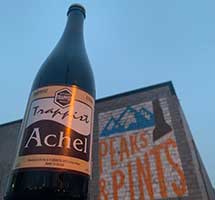 Trappist Achel Blond Extra 2020
Trappist Achel Blond Extra 2020
9.5% ABV
Achel Brewery or Brouwerij der Sint-Benedictusabdij de Achelse Kluis is by far the smallest of Belgium’s six Trappist monasteries, and one of only two in which the monks themselves still take a hand in the daily operation of the brewery. This huge, copper-colored, bottle-conditioned ale is the flagship from the tiny brewery at the St. Benedictus Abbey at Achel, in the Northeast of Belgium. A very satisfying beer, with just a little malt sweetness, dried fruit flavors, warm sherry notes, and a brisk balancing backdrop of fresh hop bitterness.
